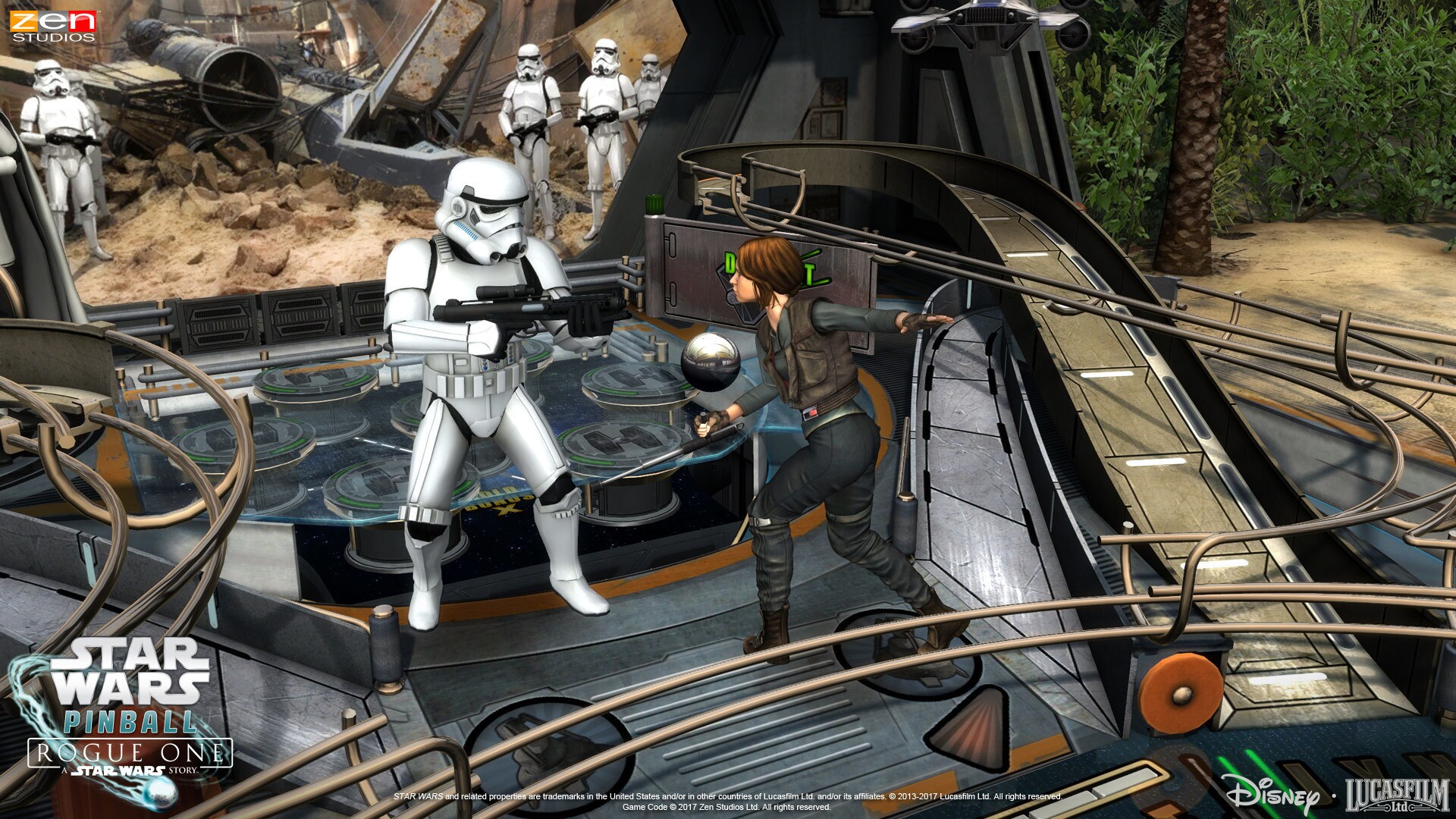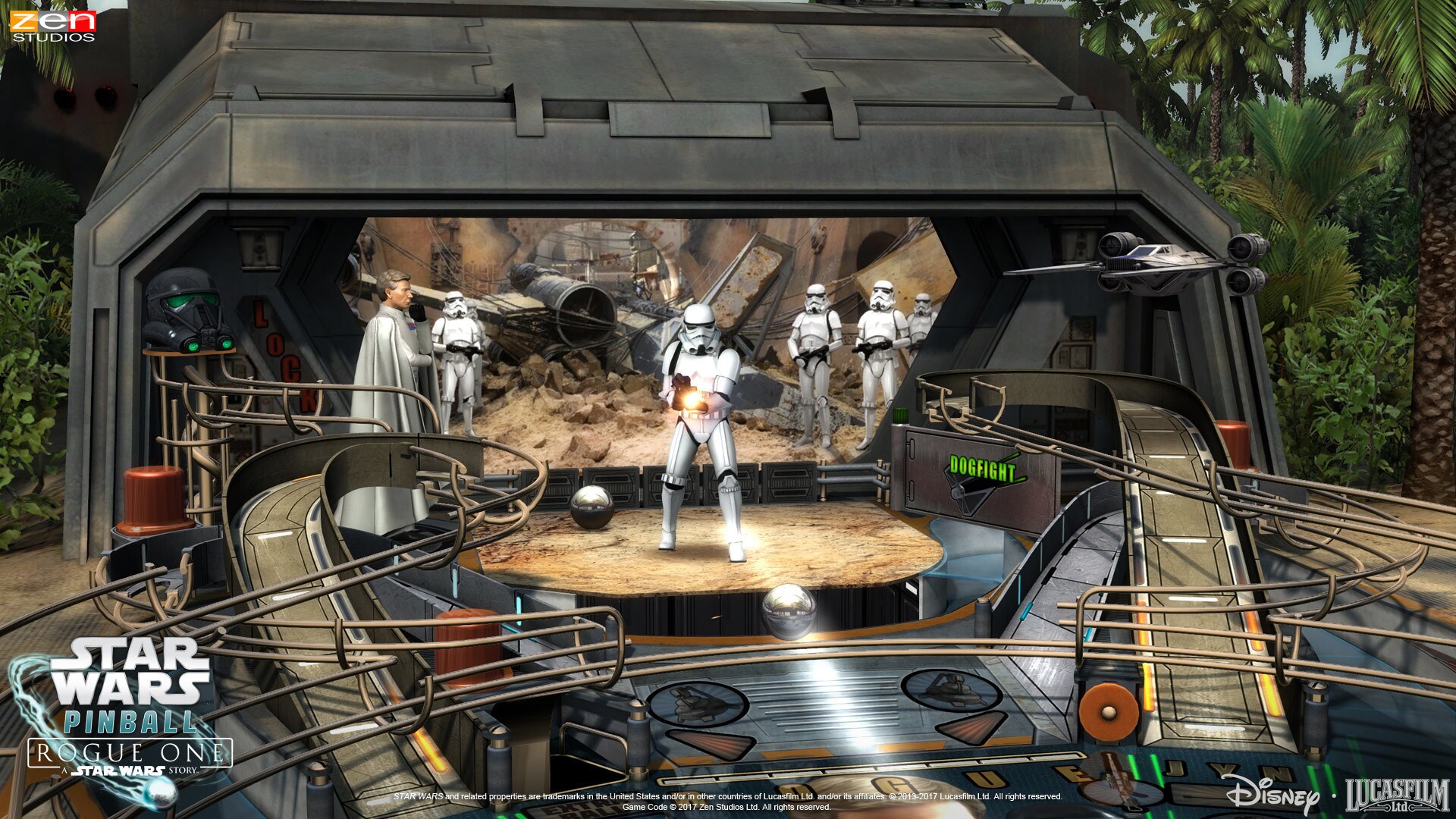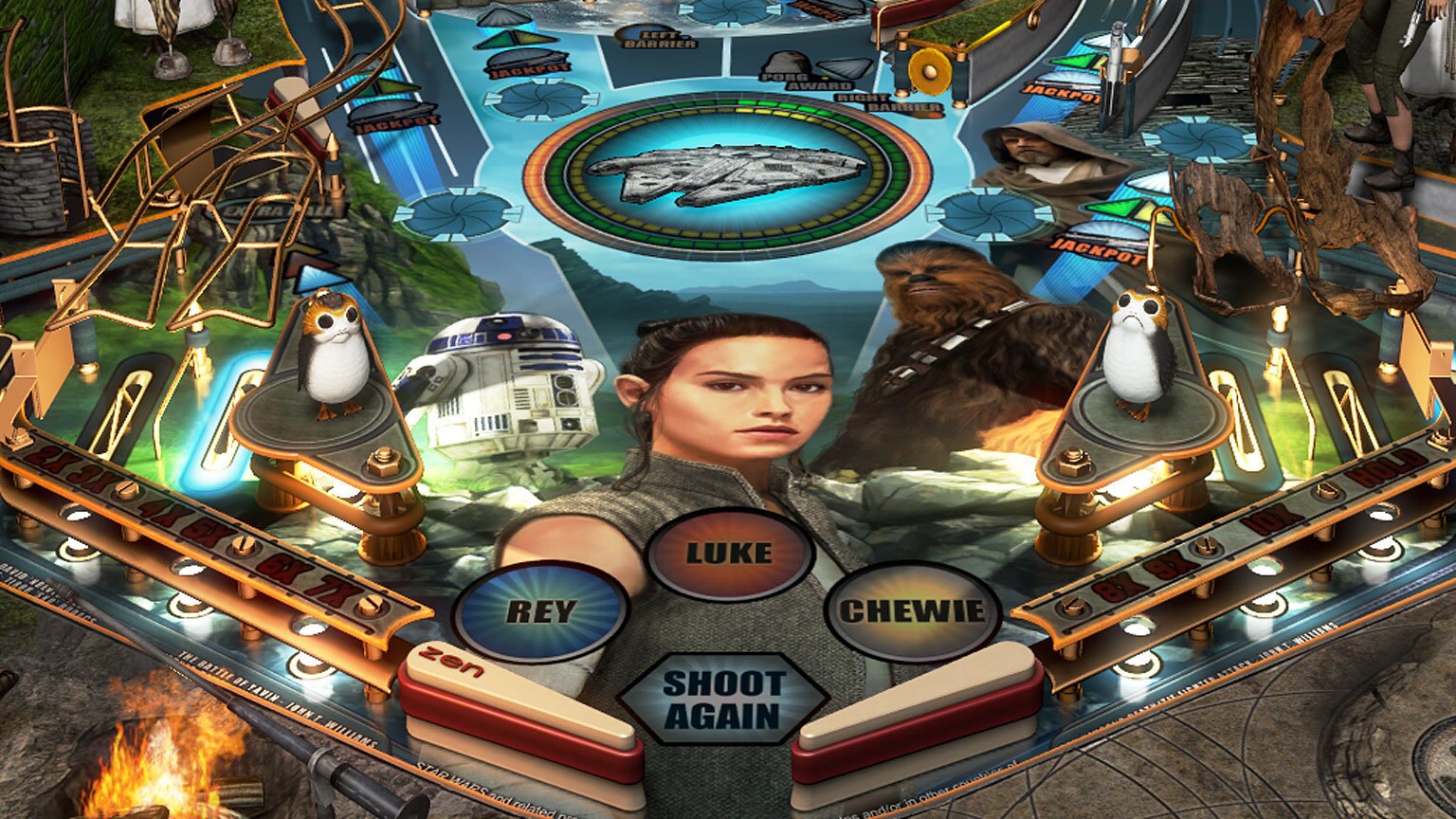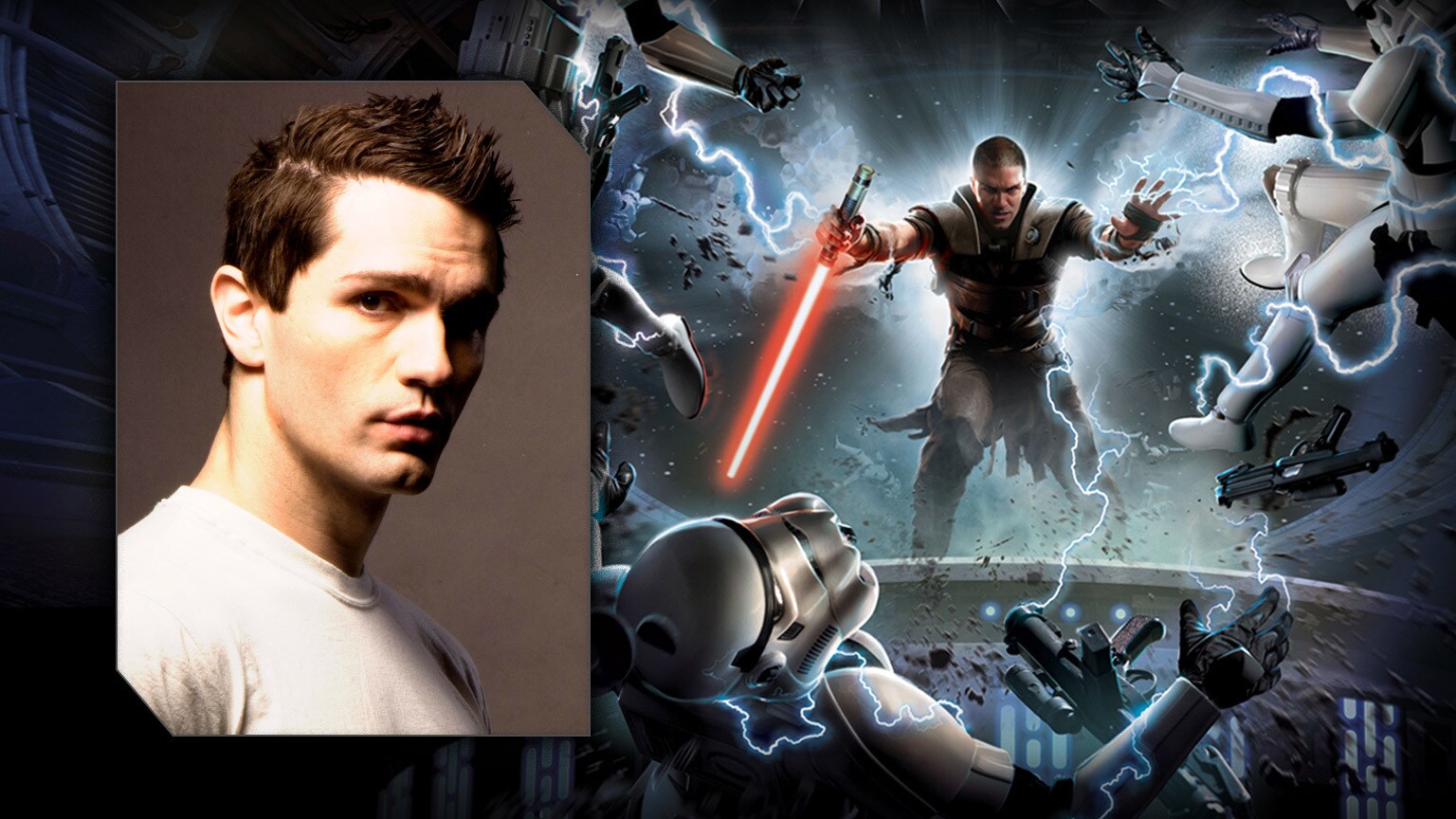For whatever reason, Star Wars and pinball just go well together. Maybe it's the mix of Star Wars starships with an inventive playfield design, the sound of classic dialogue and sound effects over blinking lights, or feeling like you really have Jedi reflexes when you sink a ball in just the right spot. Regardless, Star Wars pinball games have been around for decades, we love them, and we're getting an exciting new digital table with Star Wars Pinball: Rogue One, courtesy of the masters at Zen Studios. Coming to PC and consoles on January 31 and mobile devices on February 2, it's a lively, well-designed table, and Rogue One through and through -- you'll spot U-wings, trigger character appearances like Saw Gerrera, and, in true pinball fashion, have to spell out the word R-O-G-U-E with direct hits to advance the story. StarWars.com caught up with lead designer Zoltan Vari over e-mail to discuss keeping the expansion as real-world as possible, why an AT-ACT was a must-have, and what the pinball hardcore might enjoy most from the game.
StarWars.com: What impressed me most about the table design was the incorporation of Rogue One iconography without overpowering the pinball experience. You have the tram acting as the plunger, characters on the playfield, and Krennic hanging out in the back. Yet it's still an exciting pinball game at its core. What was the design approach?
Zoltan Vari: Most of my favorite real-life pinball machines approach their themes with a lot of special care, ensuring that there is not a single unused portion of the playfield from a pinball perspective, which is what I try to achieve in my designs as well. Ideally, iconic elements from the film or theme should be integral parts of the gameplay, and not just simple ornaments.

StarWars.com: I noticed that, with some exceptions, the Rogue One table kind of adheres to real-world rules when it comes to effects. In other words, you could have ships and speeders and explosions throughout, because it's a digital table, but you don't. Was the idea to keep the game relatively close to a table you might play in an actual arcade?
Zoltan Vari: Definitely. My table designs are basically created with the idea of what can be created in a real-world table -- not unlike the Dejarik board aboard the Millennium Falcon. Even though there are animated characters on the table, rules still apply, just like on real pinball machines. The physical locks are a good example, which I love. Even the splinter balls (the small balls when Krennic tries to destroy the ball) could be created on a real-life pinball machine in some way, and would be a very exciting experience.
On the other hand, there were mandatory features like the AT-ACT walker -- a must-have on a Rogue One table. When I started to draw the layout of the table, the most important detail to have was enough room for a changing stage, as I wanted to bring all of the memorable events of the movie onto the stage.
StarWars.com: That said, when the table does take advantage of the digital aspect, it's really fun. I loved how characters and constructs will appear when triggered, and you can advance through the story of the movie. When you're "on Jedha," you want to avoid detection, so you have to keep the ball away from a stormtrooper; when the rebels need to infiltrate the shield gate above Scarif, you have to sink the ball through its port. What was the process in figuring out how to tell the story this way and incorporate animations appropriately?
Zoltan Vari: It was a long process, honestly. When the initial design was laid out, the film was still in production, a lot of stuff was confidential. We came up with our ideas, and our contacts at Lucasfilm helped us figure out if they could fit in or not into the plot of the movie. The shaping of the actual stages remained in constant development until almost the end of the project. The shield gate is a good example of that; at first, we created it in a way we presumed would work, but it turned out that it opens/closes differently than we thought, so we had to modify it accordingly.



















